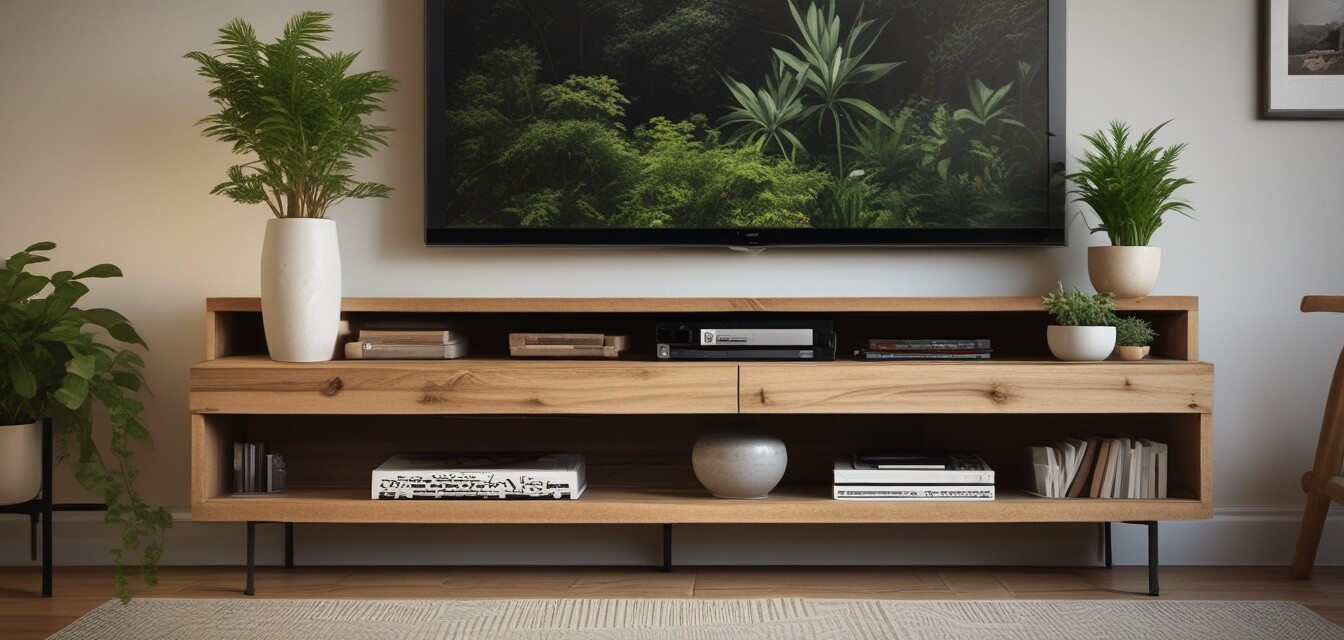
Eco-Friendly Furniture for Shared Living Spaces
Key Takeaways
- Choosing sustainable furniture not only benefits the environment but also enhances your living space.
- Space-efficient options like modular and floating TV stands are perfect for co-living setups.
- Prioritize materials that are recyclable, biodegradable, or made from sustainable sources.
- Look for brands that implement eco-friendly practices in their manufacturing processes.
As more individuals transition to shared living spaces, the need for eco-friendly furniture solutions becomes paramount. This article presents sustainable furniture options that are not only good for the planet but also serve the practical needs of co-living environments. From space-efficient designs to versatile materials, we explore how to make your shared living area both stylish and sustainable.
Understanding the importance of sustainable furniture
Before diving into specific furniture options, it's essential to understand why sustainable furniture matters. The furniture industry is notorious for its environmental impact, with many traditional materials contributing to deforestation and pollution. On the other hand, sustainable furniture offers a solution that incorporates responsible sourcing, minimizes environmental harm, and can even benefit your personal health.
Key features to look for in eco-friendly furniture
- Sustainable materials: Look for furniture made from recycled, reclaimed, or responsibly sourced materials.
- Durability: Sustainable furniture should withstand the test of time, reducing the need for frequent replacements.
- Low VOCs: Choose products that emit low levels of volatile organic compounds, which can adversely affect indoor air quality.
- Fair trade practices: Support brands that ensure fair wages and safe working conditions for their producers.
Space-efficient furniture options for shared living spaces
Given the nature of co-living, space efficiency becomes a necessity. Here are some furniture types that maximize space while remaining eco-friendly:
| Furniture Type | Description | Benefits |
|---|---|---|
| Modular TV Stands | Furniture that can be customized and expanded based on space requirements. | Adaptable to different room layouts; allows for creative configurations. |
| Floating TV Stands | Wall-mounted options that save floor space while offering storage. | Creates an open feel in smaller areas; provides a clean aesthetic. |
| Corners Stands | Designed to fit in corners, maximizing otherwise wasted space. | Utilizes all available space effectively; enhances room design. |
| Multi-functional furniture | Items that serve more than one purpose, such as storage benches or ottomans. | Reduces the need for multiple pieces; adds flexibility to your space. |
Tips for choosing eco-friendly TV stands
Beginner's Section
- Research materials: Familiarize yourself with types of sustainable materials such as bamboo, reclaimed wood, and recycled metals.
- Read reviews: Look for user feedback regarding the durability and performance of eco-friendly TV stands.
- Compare prices: Sustainable furniture may be pricier, but weigh that against longevity and environmental impact.
- Check for certifications: Look for furniture that holds certifications for sustainability to ensure you are making responsible choices.
Where to buy eco-friendly furniture
When looking for sustainable furniture, consider visiting stores that specialize in eco-friendly products. Online platforms are also ripe with selections, especially for items like corner TV stands or floating TV stands. Make sure to read product descriptions carefully to ensure eco-friendliness.
Integrating eco-friendly furniture into your co-living space
Combining sustainable furniture in your shared living setup can create a cohesive aesthetic that encourages a greener lifestyle. Here are a few suggestions:
- Opt for color schemes that reflect natural tones; greens, browns, and other earth colors can enhance the overall ambiance.
- Incorporate plants; not only do they clean the air but also add life to your shared living space.
- Encourage others in the living space to participate in eco-friendly practices like recycling and digitizing documents to minimize paper waste.
The long-term benefits of sustainable living
Transitioning to eco-friendly furniture and overall sustainable living practices can yield numerous long-term benefits. Not only does it promote a healthier living environment, but it also contributes positively to the planet, providing a better future for generations to come. Additionally, embracing sustainability often leads to cost savings in the long run by reducing energy consumption and the need for constant replacements.
Pros
- Reduces environmental impact.
- Enhances indoor air quality.
- Provides a unique aesthetic tailored to personal style.
- Long-lasting materials contribute to lower overall costs.
Cons
- Some sustainable options may be pricier initially.
- Availability may vary based on location.
- Limited selection in traditional stores may require online shopping.
Conclusion
Incorporating eco-friendly furniture into shared living spaces not only creates a stylish and comfortable environment but also reinforces a commitment to sustainability. With space-efficient options like modular and floating TV stands, you can meet your living needs while honoring the planet. By making mindful choices, you can enjoy a beautiful home that reflects your eco-conscious values, creating a brighter future for everyone.
To explore more about sustainable furniture solutions, check our Eco-Friendly Living category or discover the best in wooden TV stands for your space. Happy living!